NASA APOD #1019-1026
#1019 Hen-1357: New Born Nebula April 03, 1998
“This Hubble Space Telescope picture shows Hen-1357, the youngest known planetary nebula. Graceful, gentle curves and symmetry suggest its popular name - The Stingray Nebula. Observations in the 1970s detected no nebular material, but this image from March 1996 clearly shows the Stingray's emerging bubbles and rings of shocked and ionized gas. The gas is energized by the hot central star as it nears the end of its life, evolving toward a final white dwarf phase. The image also shows a companion star (at about 10 o'clock) within the nebula. Astronomers suspect that such companions account for the complex shapes and rings of this and many other planetary nebulae. This cosmic infant is about 130 times the size of our own solar system and growing. It is 18,000 light-years distant, in the southern constellation Ara."
Copyright: Public domain
#1020 Mercury Astronauts and a Redstone April 04, 1998
“Space suited project Mercury astronauts John H. Glenn, Virgil I. Grissom, and Alan B. Shepard Jr. (left to right) are posing in front of a Redstone rocket in this vintage 1961 NASA publicity photo. Project Mercury was the first U.S. program designed to put humans in space. It resulted in 6 flights using one-man capsules and Redstone and Atlas rockets. Shortly after the first U.S. manned flight on May 5, 1961, a suborbital flight piloted by Alan Shepard, President Kennedy announced the goal of a manned lunar landing by 1970. This goal was achieved by NASA's Apollo program and Shepard himself walked on the moon as commander of the Apollo 14 mission. Virgil Grissom died in a tragic fire during an Apollo launch pad test in 1967. Senator John Glenn will fly again on the 25th voyage of the Space Shuttle Discovery."
Copyright: Public domain
#1021 X-Ray Pleiades April 05, 1998
“The Pleiades star cluster is one of the jewels of the northern sky. To the unaided eye it appears as a lovely and tantalizing grouping of stars in the constellation of Taurus, while telescopic views reveal cluster stars surrounded by delicate blue wisps of dust-reflected starlight. To the X-ray telescopes on board the orbiting ROSAT observatory, the cluster also presents an impressive, but slightly altered, appearance. This false color image was produced from ROSAT observations by translating different X-ray energy bands to visual colors - the lowest energies are shown in red, medium in green, and highest energies in blue. (The green boxes mark the position of the seven brightest visual stars.) The Pleiades stars seen in X-rays have extremely hot, tenuous outer atmospheres called coronas and the range of colors corresponds to different coronal temperatures."
Copyright: Public domain
#1022 A Face On Mars April 06, 1998
“This image, showing what looks to be a human face (above center) and other features of the Cydonia region on the Martian surface, was produced using data from NASA's Viking 1 orbiter in 1976. Described in a NASA press release as a "rock formation which resembles a human head", some have since offered the extraordinary explanation that the face is an artificial construct built by a civilization on Mars! However, most scientists have a more conventional view - that this feature is indeed a natural Martian hill whose illusory face-like appearance depends on illumination and viewing angle. This month, the Mars Global Surveyor satellite will be in position to take new pictures of this region of controversial Martian features along with areas around the Mars Pathfinder and Viking landing sites."
Copyright: Public domain
#1023 Return To Cydonia April 07, 1998
“Yesterday the Mars Global Surveyor project released a new close-up image of a portion of the Cydonia region on Mars. This cropped and processed version shows an area about 2 miles wide (the full version covers a strip nearly 2.6 miles wide by 25 miles long) and at full resolution has a pixel size of about 14 feet. The rock formation visible is the famous feature seen as the "Face on Mars" in 1976 Viking orbiter images. Such complex looking landforms in the Cydonia region are thought to be the result of erosion and weathering of ancient crust by Martian winds, frost, and possibly surface water. Mars Global Surveyor is scheduled to take other images of the Cydonia region and the Mars Pathfinder and Viking landing sites this month."
Copyright: Public domain
#1024 Nabta: Older than Stonehenge April 08, 1998
“In the Sahara Desert in Egypt lie the oldest known astronomically aligned stones in the world: Nabta. Over one thousand years before the creation of Stonehenge, local herders built a stone circle and other structures on the shoreline of a lake that has long since dried up. Over 6000 years ago, stone slabs three meters high were dragged over a kilometer to create the site. Shown above is one of the stones that remains. Little is known about the ultimate purpose of Nabta and the nature of the people who built it."
Copyright: Public domain
#1025 Quasar in an Elliptical Galaxy April 09, 1998
“Where do quasars live? Quasars are the brightest objects in the universe, so bright they can be seen from across the universe. Observations continue to show that most quasars are surrounded by a relatively faint nebulous patch. Astronomers are trying to identify the nature of these patches. The above false-color picture shows a central quasar embedded in an unusual elliptical galaxy. The galaxy is being gravitationally distorted by a neighboring galaxy. Recent evidence indicates that most quasars live near the centers of large, elliptical galaxies - even those quasars where no host galaxy could be found before. Quasars themselves are thought to result from matter falling toward supermassive black-holes."
Copyright: Public domain
#1026 Hyakutake: Comet Atmosphere April 10, 1998
“The atmosphere of a comet comes and goes. Approaching the sun, it swells as material from the icy cometary nucleus is warmed and evaporated by increasing sunlight. Immense but tenuous and fleeting, the inner atmosphere or inner "coma" of comet Hyakutake is seen in this false color picture. Oriented with the sunward direction toward the upper right, the picture is a composite of Hubble Space Telescope images recorded on April 3 and 4, 1996. It is about 14,000 km across (comparable to Earth's diameter) and is a combination of images showing dust reflected light (red) and ultraviolet light scattered from Hydrogen atoms (blue). Hyakutake's Hydrogen atoms were produced by the breakup of water (H20) molecules evaporating from its nucleus. The Hydrogen data, combined with other observations, indicate that this comet's nucleus, itself only a few km across, was producing about 7 to 8 tons of water per second."
Copyright: Public domain
Upvote! Resteem! Comment! As you like it! Thank you for attention!

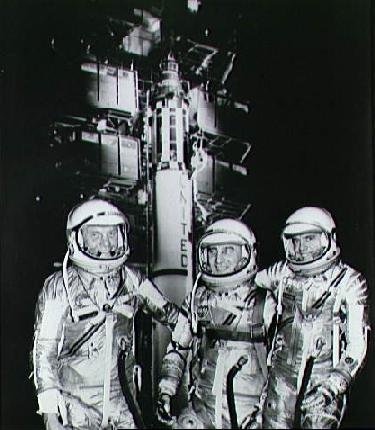
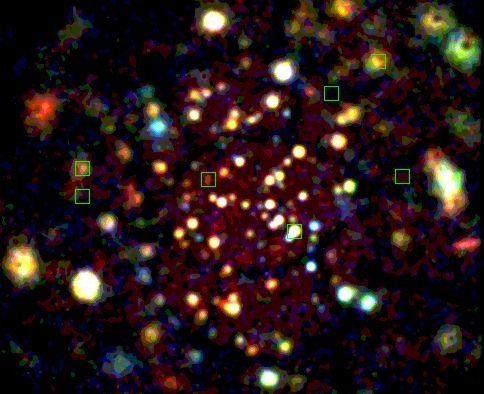
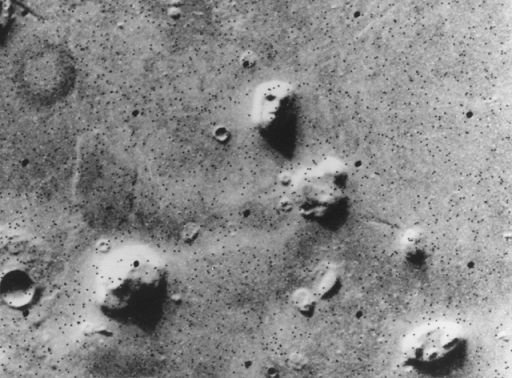
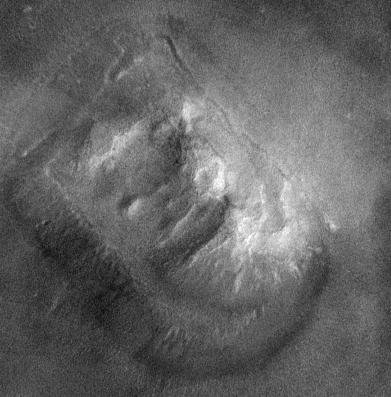
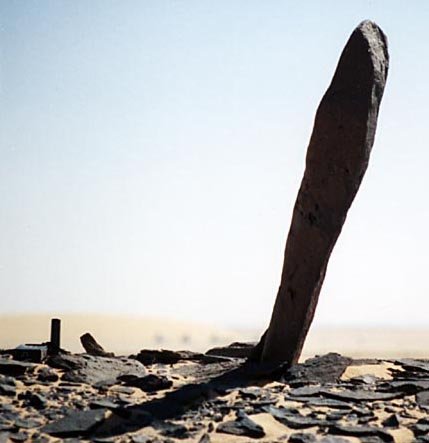
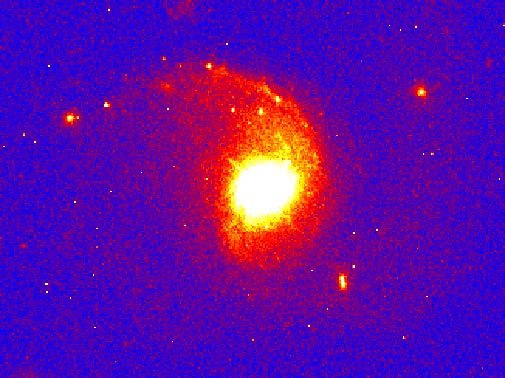
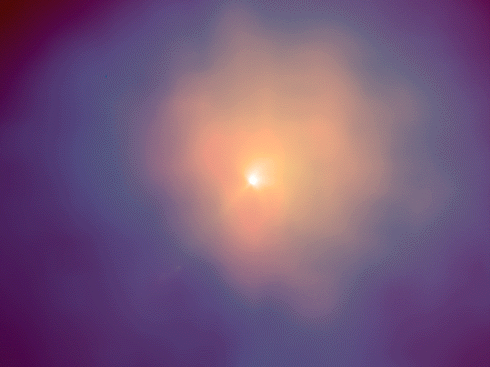
Hi! I am a robot. I just upvoted you! I found similar content that readers might be interested in:
https://apod.nasa.gov/apod/ap980407.html